 |
 |
 |
 |
 |
 |
| |
|
|
|
|
|
|
| |
|
|
|
|
|
|
| |
Learn About California Exonerees
|
|
|
|
|
| |
 |
|
|
|
 |
|
| |
Herman Atkins
County: Riverside
Convicted of: Forcible Rape, Forcible Oral Copulation, and Robbery
Year of Conviction: 1988
Sentence: 45 years
Year Released: 2000
Years Served: 11.5 years
Wrongful Conviction Factors: Mistaken eyewitness identification
Video Wrongfully Convicted: Herman Atkins
Herman Atkins, a tall and poised man, is a
blissful newlywed and pursuing a masters and doctoral degree
in Psychology from California State University, Fresno. The
son of a California Highway Patrol Officer, Herman has traveled
the country and starred in an acclaimed documentary. By looking
at him, you would never know that twelve years of Herman's
life was stolen by the State of California. His adolescence
cheated by the error of the criminal justice system, and only
to be resolved over a decade later.
In 1986, Herman was a recent high school
graduate, preparing to follow his admired father's footstep
and join the military. A twisted set of events, however, prevented
him from even experiencing his twenties.
Herman, now 40, was accused of raping a woman
during a 1986 robbery in a Lake Elsinore shoe store. In 1988,
the jury convicted him to forty-five years in prison. DNA
testing was not available during his trial; however, in 1993,
the Innocence project requested that the evidence be tested.
The results were not surprising - the source of semen on the
victim's sweater eliminated Herman as the source. The FBI
lab confirmed these results.
Herman, the 70th person in North America freed
from prison as a result of DNA testing, was release on February
18th, 2000, after serving almost 12 years for a crime he did
not commit. The rapist was never caught.
"Only God and I knew my innocence," Herman
tearfully stated on the day of his release. "Today, God, I,
the Riverside District Attorney and the people of California
and the United States know that I am an innocent man."
Herman currently lives in Fresno with his
wife Machara. They have set up a small foundation, LIFE, to
assist other recent exonerees with the basic necessities once
they are released from prison. In addition to time, Herman
laments on the opportunities robbed from him during those
twelve years, "It robbed me of a relationship with my father,
a relationship with my grandmother. It robbed me of any opportunity
in life."
|
 |
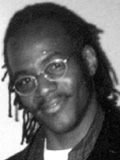 |
|
| |
 |
 |
|
| |
Kevin Baruxes
County: San Diego
Convicted of: Rape
Year of Conviction: 1996
Sentence: 15 years to life
Year Released: 2003
Years Served: 7.5 years
Wrongful Conviction Factors: False testimony by witness
Cortni Mahaffy came to the police and said three men, one of whom had a skinhead tattoo, had raped her. She said that it had happened in the trash enclosure outside her apartment building, that a knife had been pulled and that the attacker had a chain wallet.
Everything that she said pointed to 18 year-old
Kevin Baruxes, a local skinhead who lived at home and had
frequent run-ins with the police. He had the tattoo she had
described and when he was picked up, he had a knife and a
chain wallet in his pockets. He had spoken to her a few times
while visiting friends who lived in the building. Mahaffy
testified that Kevin had shared his views about race. "He
told me that he liked me as a person, but when the race war
came, he would have to kill me" because, as a Sicilian,
she was not "pure white."
It took police only a week to pick up Baruxes. Mahaffy identified him and his brother as her attackers (she later dropped the identification of his brother). Despite the fact that his family swore he had been at home and there was no physical evidence of the crime, Baruxes was convicted based on her convincing testimony and eyewitness identification. Further, because of the racist element of the crime, he was given an aggravated sentence for committing a hate crime. "You gotta be kidding," Kevin said. "This is like the kind of stuff I see on TV where someone gets blamed for a crime that they haven't even done."
Years later, an email sent by Mahaffy's ex-fiancee, Mike Chaney, started the momentum that led to Baruxes release. He wrote that he believed she had falsely accused Baruxes. Several more witnesses came forward testifying that she was a compulsive liar and in the end, she recanted her testimony against him. Baruxes was released in 2003 after spending more than seven years in prison for a crime that he not only did not commit, but one that seems highly plausible to never have even occurred.
Kevin Baruxes is now readjusting to life on the outside. He carries the judge's order of his exoneration in his back pocket. He is 26 years old and he bears two scars from a prison knife attack that almost killed him. Recently , Baruxes was awarded $265,000 ($100/day) for wrongful imprisonment. |
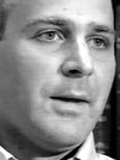 |
|
| |
|
|
|
| |
 |
 |
|
| |
Arvind Balu
County: Lake
Convicted of: Gang Rape
Year of Conviction: 1997
Sentence: 20 years
Year Released: 2005
Years Served: 8 years
Wrongful Conviction Factors: False Testimony, Inadequate Representation, Prosecutorial Misconduct
On May 16, 1997, a twenty one year old college student named Arvind Balu was arrested and charged with five serious felonies after a teenager reported that he had tied her up, raped her at knife point, cut her with the knife, and then licked her blood. This assault was supposed to have occurred approximately nine months earlier at the Konocti Harbor Resort.
Given what is known now, it seems remarkable that criminal charges were ever brought as a result of these allegations. What has come to light are a remarkable number of circumstances that plainly establish that these charges were false including the implausible and inconsistent accounts given by the alleged victim to police and others; her unexplained failure to say a word about them to anyone for more than nine months; her immediate destruction of the pages in her diary relating to her trip once her rape accusation was reported to the authorities (it was reported against her will); and much other information that casts doubt upon her credibility. In addition, there was absolutely no physical evidence implicating Balu.
Arvind’s trial attorney was grossly incompetent and failed to fully investigate the case. The fact that Arvind had been in trouble with the law as a juvenile for minor infractions, and that he was bi-polar, may have been used against him during the police investigation.
Arvind recalls, “I went into shock when they told me I was facing 60 years in prison.”
Once convicted, Arvind spent eight brutal years behind bars. He painfully remembers, “I was held in solitary for three years, much without sunlight. I was beaten and tortured.”
Arvind’s codefendant Brendan Loftus, who was white, was also wrongfully convicted. However, he received a considerably lesser sentence of 5 years. He was completely cleared by the First District Court of Appeal within two years of his conviction.
After being released, Arvind continues to struggle, “I returned to Cal-Berkeley for a couple of years, only to face discrimination. I have begun my own activist project; my goal is to create electronic tools to free people from oppression and expand the Innocence Project. California owes me as a whole for this atrocity.”

|
|
|
| |
Arthur Carmona
County: Orange
Convicted of: Armed Robbery (2 counts)
Year of Conviction: 1998
Sentence: 12 years
Year Released: 2000
Years Served: 2 years
Wrongful Conviction Factors: Mistaken eyewitness
identification; police misconduct
Podcast: Arthur Carmona
Read our statement about Arthur's tragic murder on February 17, 2008
In 1998, Arthur Carmona, a 16 year old student
at Costa Mesa High School, believed in the criminal justice
system. Arthur was living in southern California, enjoying
school and being with his friends. The events that occurred
on February 12th of that year, however, dissolved Arthur's
youth, snatching with it the hope of this young man.
"There are pictures of graduation," says
Arthur, of his high school class, "but it means nothing to
me."
On February 12th, 1998, two robberies occurred:
at a Juice Bar in Irvine and at a Costa Mesa Denny's restaurant.
A gunman clad in dark clothing and a Los Angeles Lakers cap
robbed the two locations and then fled in a truck driven by
Shawn Kaiwi. Kaiwi, apprehended that night, told police that
a guy got into his car with a gun and told him to drop him
off down the freeway. Police arrested Kaiwi and during their
search found clothing and the Lakers cap inside the truck.
Two hours after the Irvine robbery, Arthur
was walking to a friend's house when he noticed a helicopter
circling directly above him. Seconds later, he was stopped
at gunpoint by police. Arthur was not wearing dark clothing
or a cap, according to the complaint. Witnesses to both robberies
were brought to the scene of Arthur's arrest. They could not
identify him at first, but when police asked Arthur to put
on the cap and a jacket, witnesses made the identification.
Carmona, tried as an adult, was convicted
and sentenced to 12 years based largely on the witness statements.
From the beginning, Arthur maintained his
innocence. Family members and supporters started a campaign
for his release, and began raising money. A Weekly and Los
Angeles Times columnist, Dana Parsons began poking holes in
the case and eyewitnesses recanted their testimony, including
Kaiwi, who eventually admitted he did not know Arthur.
On August 22nd, 2000, an Orange County Superior
Court considered the overwhelming evidence that Carmona had
been wrongfully convicted of both crimes and ordered his release
with the agreement of the DA, but only after a stipulation
that he would not sue them or the police.
Arthur, while having a difficult time adjusting
to life outside of prison, is living in San Diego, working
with his father and going to school.
|
 |
|
| |
 |
 |
|
| |
Clarence Chance and Benny Powell
County: Los Angeles
Convicted of: 1st Degree Murder and Robbery
Year of Conviction: 1975
Sentence: Life without parole
Year Released: 1992
Years Served: 17 years
Wrongful Conviction Factors: Police misconduct; perjured testimony; false informant testimony
On a December night in 1973, Clarence Chance was being held in a county jail. Yet, he was ultimately convicted of robbing a gas station and murdering an off-duty sheriff's deputy in the men's room that same night. Chance and his codefendant, Benny Powell, served 17 years for a crime that they did not and could not have committed.
While in prison, Chance and Powell refused to give up hope and eventually, someone responded to their pleas for help. Jim McCloskey of Centurion Ministries tracked down three witnesses who said that the LAPD had pressured and coerced them into giving their false testimonies. On this discovery, county prosecutors joined the investigation and discovered that police had not revealed the fact that the jailhouse informant who gave key testimony had failed two polygraph tests. After four years of investigation, Los Angeles County District Attorney's office joined defense lawyers in asking that Chance and Powell be freed.
When finally releasing Chance and Powell,
Los Angeles Superior Court Judge Florence-Marie Cooper gave
a judicial apology for the "gross injustice" of the
time they spent in prison. "Nothing can be done to return
to you the years irretrievably lost," she said. Since their
release, each of them has been awarded $3.5 million dollars
for their wrongful imprisonment.
|
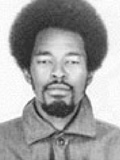 |
|
| |
 |
 |
|
| |
Patrick Croy
County: Placer
Convicted of: 1st Degree Murder
Year of Conviction: 1978
Sentence: Death
Year Released: 1990
Years Served: 10 years
Wrongful Conviction Factors: Erroneous instructions; poor defense
Video Wrongfully Convicted: Patrick Croy
In 1978, Patrick "Hootie" Croy was
working as a logger in Eureka. A weekend of partying led to
an ill-fated shoot out between police and a group including
Croy. By the end, Officer Hittson was dead. Croy was convicted
of attempted robbery and Officer Hittson's murder. The jury
did not convict Croy of intentionally killing the offer, but,
rather, convicted him based on the theory of felony murder
-- that is, that he intentionally committed a robbery that
resulted in the officer's death. Croy was sentenced to death.
In 1985, Croy's conviction and death sentence were overturned. The California Supreme Court found that the trial judge had read the wrong instructions to the jury, allowing the jury to convict Croy of robbery even if he did not intend to steal. Because the murder conviction was based on the theory that Croy had intentionally committed a robbery that had caused the officer's death, the murder conviction too was reversed.
The case was re-tried and Croy presented evidence
that he acted in self-defense during the shoot out. The jury
found him not guilty of the crime for which he had previously
been sentenced to death. Croy was released in 1990 and today
still lives in Eureka.
|
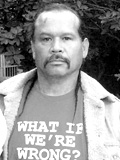 |
|
| |
 |
 |
|
| |
Frederick Daye
County: San Diego
Convicted of: Rape, Kidnapping, Grand Theft
Year of Conviction: 1984
Sentence: Life
Year Released: 1994
Years Served: 10 years
Wrongful Conviction Factors: Mistaken eyewitness identification; junk science
Late one evening, two men attacked the victim in this case as she walked to her car. The first assailant pushed her into the car and let another man into the back of the car. The perpetrators stole her jewelry and then raped her, eventually leaving the victim on the street and stealing her car.
The victim identified Daye from a photo lineup. She and a witness then identified him in a live lineup. Additional evidence used at trial was a conventional serology match between Daye's blood type and a semen stain. Daye's defense was mistaken identification. Daye's co-defendant, who was tried separately, refused to testify at Daye's trial.
Then, in 1990, the co-defendant made a statement revealing that Daye was not involved in the crime. A public defender was appointed to investigate the statement. When the public defender failed to investigate, Appellate Defenders, Incorporated, (ADI) took over the case.
ADI stopped the destruction of the physical evidence from his case and filed for an evidentiary hearing. Though the court refused to hear the evidentiary claims, Daye was allotted funds to pursue DNA testing as well as granted a release of the evidence.
Cellmark Diagnostics performed testing in 1994.
Testing excluded Daye as the source of sperm found on the
victim's pants. Based on the DNA results and the statement
of the other defendant, Daye's conviction was overturned in
1994, after he had endured ten years of incarceration.
|
 |
|
| |
 |
 |
|
| |
Antoine Goff & John Tennison
County: San Francisco
Convicted of: 1 st Degree Murder
Year of Conviction: 1990
Sentence: 27 years to life
Year Released: 2003
Years Served: 13 years
Wrongful Conviction Factors: Police misconduct
Video Wrongfully Convicted: Antoine Goff
In the early morning hours of August 19, 1989, Roderick Shannon was shot and killed following a car chase through the streets of San Francisco. At the time, Shannon's murder was the latest in a series of tragic and senseless killings by young men from the Sunnydale and Hunters Point neighborhoods of the city. The summer of 1989 marked the peek of the conflict, which claimed the lives of 40 people.
Facing mounting pressure to solve the case, the
police arrested John Tennison despite the lack of any reliable
evidence that he was involved. The only "evidence"
linking Tennison, and his co-defendant Antoine Goff, to the
crime was the testimony of two young girls. The girls' testimony
was inconsistent, lacked crucial details about the car chase
and killing itself, and contradicted statements by other witnesses.
One of the girls recanted her story, confessing that she did
not in fact witness the crime, but the police and the prosecutor
bullied her into going back to her original tale. Both Tennison
and Goff were convicted and sentenced to 27 years to life.
After nearly 14 years in prison, a federal court granted John Tennison's habeas petition and vacated his conviction. The federal court found that the State had procured Tennison's conviction by suppressing several pieces of exculpatory evidence, including a taped statement to police by another man who confessed to the Shannon murder, a statement from an eyewitness, and a police department memorandum suggesting the key prosecution witness was paid for her testimony.
Tennison was released from prison on August
29, 2003. Goff was released a short time later. The San Francisco
District Attorney stipulated Tennison's innocence and the
California Superior Court declared him factually innocent.
The State court found that "all evidence in this case
-- evidence which the prosecution possessed was in the possession
of the prosecution prior to Tennison's trial -- shows that
Tennison is innocent of all charges relating to the murder
of Roderick Shannon."
Tennison currently works as an investigator for
the San Francisco Public Defender and has filed a civil rights
suit based on his wrongful conviction and imprisonment. Goff
is pursuing a similar claim.
|
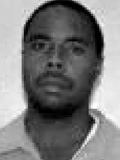 |
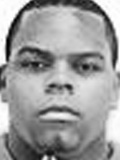 |
| |
 |
 |
|
| |
Thomas Goldstein
County: Long Beach
Convicted of: 1st Degree Murder
Year of Conviction: 1980
Sentence: 27 years to life
Year Released: 2004
Years Served: 24 years
Wrongful Conviction Factors: False testimony
by informant; misconduct of prosecutor; eyewitness error
Tom Goldstein is frequently asked, 'how did
you survive 24 years in prison for a crime you didn't commit?'
The answer, he says, lies in his daily meditation practice
and his Jewish faith which gave him strength and carried him
through.
In 1980, Tom was a Vietnam War veteran living
in a garage in a Long Beach, California, and attending college.
One night, a man was shot dead on the street near where he
lived, and soon the police zeroed in on Goldstein. Before
he knew it, Tom was convicted for the murder sentenced to
27 years to life.
The crucial witness against Goldstein was
Edward Fink, a notorious jailhouse informant who testified
that Goldstein confessed the murder to him in jail. Fink was
also the key prosecution witness in the 1984 murder trial
of Thommy Thompson in Orange County. Thompson was sentenced
to death as a result of Fink's testimony and was executed
on July 14, 1998. Just prior to the execution, the Ninth Circuit
expressed concern about whether Thompson was guilty and decided
to review the case further. But, because of a clerk's error,
the decision came too late.
Thompson was executed. Goldstein heard about
the case and, acting as his own lawyer, he obtained records
about Edward Fink from Thompson's attorney. On his own, Goldstein
field a habeas petition in federal court. The court ordered
a rare evidentiary hearing and appointed Goldstein an attorney,
Sean Kennedy. Kennedy contacted the sole eye witness who then
recanted. In 2004, Goldstein the court reversed the conviction
and ordered him released was. Even then, however, his ordeal
was not over, for a prosecutor kept him in custody for another
four months before he was really free.
When he was first released, Tom had no where
to go. His attorneys bought him his first meal as a free man,
helped him find a place to live and put him to work. Today,
Tom lives in Southern California, working as a paralegal.
He and his attorney, Sean Kennedy, now the Chief Federal Public
Defender in LA, are still close.
|
|
|
| |
 |
 |
|
| |
Ernest (Shujaa) Graham
County: Santa Clara
Convicted of: 1st Degree
Murder
Year of Conviction: 1976
Sentence: Death
Year Released: 1981
Years Served: 8 years
Wrongful Conviction Factor: Police misconduct;
prosecutorial misconduct
As he says, "wounded by the blows of capital
punishment but not slain," Ernest "Shujaa" Graham walked off
death row in 1981, after serving eight years for a murder
he did not commit.
Shujaa was born and raised in a small town
called Lake Providence, Louisiana. He and his family were
share-croppers. "My only goal was to get out of the fields,
to be a tractor driver, so I wouldn't have to work so hard."
At eight years old, his mother moved to Los
Angeles and just couldn't afford to bring Shujaa. His grandmother,
"who he owes so much to," raised him for the next few years.
At 12, he joined his mother in South-Central Los Angeles but
the culture shock was difficult for him to bear. Shujaa lived
through the Watts riot and experienced the police occupation
of his community. He was in and out of juvenile hall. "In
1969," he said, "I was convicted of a $35 robbery and sent
to prison." He was just 18 years old.
But in prison, "those who we despise the most
took me under their wing," he said. Shujaa learned to read
and write; he studied history and world affairs, and became
a leader of the Black Panther Party within the California
prison system.
In November 1973, Shujaa was wrongfully convicted
of the murder of a prison guard and sentenced to death. "Every
day was hard on death row" he said. He was beaten, and often
nearly lost hope, drawing strength from the other men on the
row who told him to hold on.
Watching television one day, he learned that
his conviction had been overturned because prosecutors had
removed all African-Americans from the jury. He was tried
twice more before he was finally acquitted of all charges,
and became a free man in 1981.
"I've been out 20 some years now and every
day when I get up I think about capital punishment, and not
only what happened to me but also those I left behind."
Shujaa and his wife have raised three children
and now have a landscaping business in Maryland. But Shujaa's
life work is ending the death penalty.
|
 |
|
| |
 |
 |
|
| |
Kevin Green
County: Orange
Convicted of: 2nd Degree Murder, Attempted Murder, Assault with a Deadly Weapon
Year of Conviction: 1980
Sentence: 15 years to life
Year Released: 1996
Years Served: 16 years
Wrongful Conviction Factors: Mistaken eyewitness identification
On September 30, 1979, Dianna Green was struck and severely injured while in her apartment. She received a blow to the middle of her forehead and, as a result, she suffered the loss of her ability to speak or otherwise communicate. At the time of the attack, Dianna Green was pregnant. The baby was still-born.
Kevin Lee Green, Dianna's husband, said he was not home at the time of the event. He testified that he left the apartment, went to a hamburger stand for food, and when he returned found his wife had been attacked. Police confirmed his presence at the hamburger stand with a counter-girl and the food in his possession was warm. Still, he was arrested and convicted after his wife, whose injury had caused extensive brain damage and amnesia, testified against him. No evidence corroborated Dianna's testimony. The judge sentenced Green to 15 years to life.
During the investigation it was learned that
vaginal slides taken from Dianna Green showed the presence
of sperm. A DNA profile from the sperm was eventually found
to match another felon, who confessed to the attack as well
as five other murders. Based on this DNA database hit and
the confession, Green was exonerated and released after spending
sixteen years in prison.
|
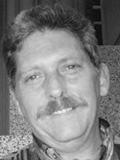 |
|
| |
 |
 |
|
| |
Harold Hall
County: Los Angeles
Convicted of: 1st Degree Murder (2 counts)
Year of Conviction: 1990
Sentence: Life without Parole
Year Released: 2004
Years Served: 19 years
Wrongful Conviction Factor: Coerced confession; police and prosecutorial misconduct; false testimony by informant
Video
Wrongfully Convicted: Harold Hall
In 1985, after seventeen hours of excruciating
interrogation Harold Hall confessed to a double murder he
did not commit. He was just 18 year-olds at the time, a high
school dropout living with his mother in South Los Angeles.
"At a certain point," he said "I knew I just had to tell the
police what they wanted to hear or it wouldn't end." He was
quickly convicted, and the prosecution asked the jury to sentence
him to death. But after Hall took the stand to declare his
innocence, the jury chose life without parole.
For the next 19 years while he was in prison,
Hall refused to let his family visit him. He couldn't bear
being connected to the outside world in anyway.
Instead, Hall worked diligently on his case
- researching, filing motions, and petitioning people for
their help. He had a job in the law library and earned his
GED. For years, he requested DNA testing of the physical evidence
from the case. For years he was denied.
In 2003, Hall was granted a new trial by
the 9th Circuit Court of Appeals, which found both the confession
and the testimony of a jailhouse informant unreliable. After
the convictions were reversed, the DNA evidence was finally
tested, proving that Hall as innocent. Charges were dismissed
and Hall was freed.
"I was released in 2004 without anything,"
said Hall. "After 19 years I found myself walking down the
street in downtown Los Angeles."
If it were not for Harold Hall's incredible
perseverance in the face of many disappointments he would
still be in prison. He knew justice would come. As he says,
"It was just a matter of time."
Hall now works for the Indigent Criminal Defense
Appointment Program of the Los Angeles County State Bar. He
wants to enjoy a normal life, take nothing for granted, and
perhaps pursue a degree in computer sciences. "What they took
from me, I can't get back," he said. "The thing is to move
forward, to enjoy what I have now."
|
|
|
| |
 |
 |
|
| |
Bobby Herrera
County:
Convicted of:
Year of Conviction:
Sentence:
Year Released:
Years Served:
Wrongful Conviction Factor:
In 1997, shots were fired near the graduation party of two San Jose girls. Bobby Herrera, an auto mechanic who was dating one of the graduates, was identified as the shooter by two people. The shooting was believed to be gang-related. Even though Herrera had no gang affiliation or prior arrests, he was arrested a few weeks after the incident.
Herrera's mother, Zenaida, hired defense attorney John Pyle, who never interviewed witnesses who would have testified that Herrera was not the shooter. Pyle advised Herrera to plead guilty, as he would likely get probation; whereas, if he were convicted at trial, he could receive up to 25 years. Pyle emphasized that going to trial would cost an additional $6000 in legal fees. Herrera, not wanting to be an additional financial burden to his parents, pleaded guilty to assault with a deadly weapon.
He was sentenced to five years in prison, not probation, in
part because he did not show remorse. Later, he asked, "How
can you have remorse for something you did not do?"
On the day of his sentencing, one of the two eyewitnesses recanted; however Pyle failed to interview her. The family retained two additional attorneys, at the cost of $18,000, who accomplished little. Finally, a third attorney secured an order by the Supreme Court for a new hearing, upon which the district attorney's office dropped all charges against Herrera. After 11 months in prison, he was released.
The family later discovered that Pyle had been repeatedly suspended from the practice of law, most recently for failure to pay his bar dues. In fact, Pyle had no standing to represent Herrera at the time of the trial. In 2003, John Pyle was disbarred.
|
|
|
| |
 |
 |
|
| |
Albert Johnson
County: Contra Costa
Convicted of: Rape (2 counts)
Year of Conviction: 1993
Sentence: 24 years
Year Released: 2003
Years Served: 10 years
Wrongful Conviction Factors: Mistaken eyewitness identification; police misconduct; poor defense
Video Wrongfully Convicted: Albert Johnson
On an evening in February 1992, a young woman was raped by a black man driving a small, white car. Later that evening, Albert Johnson, who was driving a similar car, was pulled over for speeding and detained while the police brought the woman to the scene for a one-on-one "show up" where she identified Johnson.
On the basis of the first ID, Johnson became the suspect in a second, earlier rape of a woman at a nearby high school track. A detective administered a highly suggestive photo line-up to the second victim who, despite voicing concerns that Johnson had lighter skin than her assailant, picked him out of the line-up. At separate trials, Johnson was convicted of both of these offenses and sentenced to 15 years imprisonment on the first offense and a consecutive 24 years on the second.
Johnson insisted from the moment of his arrest that he was innocent of both offenses and requested DNA testing. Neither his trial attorney nor the prosecution sought DNA testing, though rape kits had been obtained on both cases. In 2001, he filed a motion for DNA testing of the evidence on both of the cases. In October 2002, test results revealed that Johnson could not have been the perpetrator of the second assault, but the evidence in the first case had been destroyed. As a result, the first conviction was reversed. Johnson was then released from prison because he had served sufficient time to satisfy the sentence on the second offense.
Johnson maintains his innocence in the first
case, but without the evidence to test, cannot prove it. The
DNA from the case in which Johnson was exonerated was compared
with the profiles in the convicted felon database and was
identified, but the person cannot be prosecuted and remains
free because the statute of limitations has run out.
|
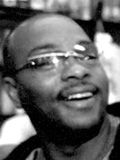 |
|
| |
 |
 |
|
| |
Gloria Killian
County: Sacramento
Convicted of: 1st Degree Murder
Year of Conviction: 1986
Sentence: 32 years to life
Year Released: 2002
Years Served: 18 years
Wrongful Conviction Factors: False testimony of informant; misconduct by prosecutor
Video
Wrongfully Convicted: Gloria Killian
Gloria Killian is an aspiring attorney, a
member of the steering committee of the San Francisco-based
non-profit, Free Battered Women, and the founder and executive
director of a non-profit, Action Committee for Women in Prison
in Los Angeles, which helps women in prison who are serving
life or housed on death row. Gloria's interest in the issue
of women in prison stems from her own experience as a woman
once incarcerated, wrongfully so, in California.
Gloria, while on break from her classes at
McGeorge Law School, was convicted of robbery-murder. In this
horrific twist of her life course, Gloria was sentenced to
32 years to Life in prison, only narrowly escaping the hands
of a death sentence, as a Supreme Court decision made her
ineligible for the death penalty - that decision has since
been overturned.
"They destroyed my entire life," said Gloria.
"They took everything I had and they smashed it into a million
pieces just because they could."
The crucial piece of evidence against Gloria
was the testimony of Gary Masse, already serving a life sentence
for a 1981 robbery-murder. Masse contacted the Sacramento
Sheriff's office in 1986 "to see if any deals could be struck"
and in exchange for a reduced sentence, he testified that
Gloria had planned and helped execute the robbery and murder
- lying under oath that he did not have a leniency deal with
the prosecution.
Several years later, an attorney for one of
Masse's co-defendants discovered Masses' letters to the prosecutor
that explained his lies, which led to Gloria's conviction.
Gloria, however, had no money to hire a lawyer and no court-appointed
attorney; without either, her knowledge of the letter was
hopeless.
Her saving grace was Joyce Ride, mother of
Sally Ride, who took an interest in Gloria's case and personally
financed a new investigation. This investigation led to a
hearing in 2000 in which Masse revealed his perjury and arrangement
with the prosecution. The groundwork was now laid for Gloria's
successful appeal to the 9th Circuit, which resulted in her
being set free in 2002 after 18 years behind bars.
"When you hear about cases like ours, demand
some accountability," said Gloria. "Because if can happen
to us, it's happening to other people, and it can happen to
you, too."
|
|
|
| |
 |
 |
|
| |
Jason Kindle
County: Los Angeles
Convicted of: Armed Robbery
Year of Conviction: 2000
Sentence: 70 years to life
Year Released: 2003
Years Served: 2 years
Wrongful Conviction Factors: Junk science; ineffective assistance of counsel
On one early morning in 1999, a man approached
the front doors of a Los Angeles Office Depot as it was opening.
The man produced a gun, rounded up the employees, and demanded
cash. Jason Kindle, who at the time worked at the Office Depot,
was accused of the armed robbery and convicted mainly because
of a laundry list of store cleaning instructions found in
his home. Police and the district attorney believed it was
a robbery "to-do" list, when in fact the list contained
notes Kindle took during a training course with Cover-All
Cleaning, his employer. Kindle's supervisor testified that
the list did indeed result from the training course. Kindle's
conviction was also based on inaccurate voice recognition
testimony. He was sentenced under the "three strikes"
law to 70 years to life.
Kindle's conviction was reversed due to the failure
of the defense to call an expert on identifications. The California
Innocence Project, along with a local Los Angeles attorney,
presented evidence to the trial court of a videotape of the
robbery that definitively proved that the actual perpetrator
was 6 feet 6 inches tall. Kindle is only 6 feet tall, six
inches shorter than the person seen on the videotape. The
charges against Kindle were dismissed and Kindle was released.
|
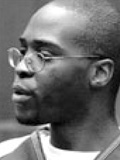 |
|
| |
 |
 |
|
| |
Kenneth Marsh
County: San Diego
Convicted of: 2nd Degree Murder
Year of Conviction: 1983
Sentence: 15 years to life
Year Released: 2004
Years Served: 21 years
Wrongful Conviction Factors: Junk science
Video
Wrongfully Convicted: Ken Marsh
Ken Marsh and Brenda Buell were enjoying the
happiest moments of their life in 1983 in San Diego County.
Ken, a man of slim stature and a warm smile, was a 28 year
old man, busy splitting his time working as a supervisor at
the local Coca-Cola plant and running his house-painting business.
Brenda worked in as an assistant manager at a local wholesale
florist. Living together, the best friends were raising Brenda's
two very young children, Jessica and Phillip Buell.
Twenty-three years later, Ken and Brenda are
now married but the stories that fill the last two decades
of each of their lives are very different. Ken, now 51, is
a man with separation anxiety and heartbreaking eyes, who
finds behind him twenty-one years of his dignity, shredded
and stolen by the California's criminal justice system.
In 1983, Ken was babysitting Brenda's two
children, when Phillip, 33-months old, fell from the couch
and hit his head on a brick hearth. Ken called the paramedics,
who transported Phillip to Children's Hospital. Phillip died
that evening. The doctors had noted the incident as child
abuse, though the injury was treated as an accidental fall
by the San Diego Police Department. Ken was taken into custody,
and later charged and convicted of the second degree murder
of Phillip Buell.
Brenda never lost hope in Ken and struggled
for the next 21 years to free the innocent man she loved.
They were not allowed to see each other during the two decades
Ken spent in prison but maintained their relationship through
covert letters.
"What happened to us in 1983," says a tearful
Marsh, "They ripped us apart."
After eighteen years of imprisonment, the
pieces of Ken's wrongful conviction began to come together.
Brenda found a dispatcher who had recorded the discussion
in the ambulance transport to Children's Hospital. The transport
was initially labeled as uneventful; however, the treatment
Philip, a baby with a blood disorder, was given actually acerbated
his brain swelling, causing cardiac arrest. He had died before
he even arrived at Children's. The California Innocence Project,
along with a local San Diego attorney, sought a new trial
after uncovering additional forensic evidence that proved
Ken's innocence. In 2004, the district attorney's office dismissed
the charges and Ken was a free man.
|
 |
|
| |
 |
 |
|
| |
Dewayne McKinney
County: Orange
Convicted of: 1st Degree Murder and Robbery
Year of Conviction: 1981
Sentence: Life
Year Released: 2000
Years Served: 19 years
Wrongful Conviction Factors: Mistaken eyewitness identification; police misconduct
Video Wrongfully Convicted: Dewayne McKinney
On December 11, 1980, a man robbed an Orange County Burger King, stealing over $2,500 and killing the manager of the store. The man disappeared into a car and fled the scene. Four witnesses at the scene identified Dewayne McKinney as the killer. The police had falsely led these witnesses to believe that McKinney had confessed to the crime. In addition, the identifications were made under severe stress, and all of the identifications were cross-racial.
There was no physical evidence linking McKinney to the scene, and multiple witnesses testified that he was at home, some 30 miles from the scene. These same witnesses testified that McKinney was also injured at the time and required the aid of crutches to walk. The prosecution, however, used thinly veiled racist comments to undermine the credibility of each of these witnesses, who were all low-income African Americans.
McKinney had all but given up hope: "I
haven't done anything and i'm stuck in a box," he said.
Then, in 1997, the Orange County Public Defender received
a letter from a prison inmate who claimed to know the identity
of the real killer. The Orange County District Attorney's
office received a copy of this letter two years later, when
defense attorneys filed a brief and affidavits in court. In
response, the D.A.'s office ordered an investigation. Through
the course of the investigation, they tracked down the getaway
driver who admitted his role and stated that McKinney was
not involved. Additionally, several of the original witnesses
recanted their statements that McKinney was the killer. In
2000, the District Attorney's Office filed a request with
the Superior Court asking for McKinney's release, stating
that there was not enough evidence to support his conviction.
McKinney was given $2 million and prison issued street clothes
upon his release.
After spending nineteen years of his life
serving time for a crime he did not commit, Dewayne McKinney
is a free man.
|
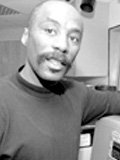 |
|
| |
 |
 |
|
| |
Melvin Mikes
County: Los Angeles
Convicted of: 1st Degree Murder
Year of Conviction: 1985
Sentence: 25 to life
Year Released: 1991
Years served: 7 years
Wrongful Conviction Factor: Poor defense lawyering
Mikes was convicted of beating to death a
fix-it shop owner during a robbery. His counsel failed to
present alibi witness. The conviction was vacated due to insufficient
evidence. Mikes' release was delayed four months waiting for
the District Attorney's unsuccessful appeal to the U.S. Supreme
Court. Mikes served seven years of his 25 years to life sentence
for a crime he did not commit.
|
 |
|
| |
 |
 |
|
| |
Glen "Buddy" Nickerson
County: Santa Clara
Convicted of: 1st Degree Murder (2 counts)
Year of Conviction: 1984
Sentence: Life without parole
Year Released: 2003
Years Served: 19 years
Wrongful Conviction Factors: Police misconduct; eye witness error
Video
Wrongfully Convicted: Glen "Buddy" Nickerson
The story of Glen William "Buddy" Nickerson
begins on St. Patrick's Day of 1955, when he was born the
oldest son of Glen Sr. and his wife, Doris Jean. Buddy had
an older sister, Glenna, and two younger brothers, Richard
and Harry, whom everyone called Nicky. Unlike his thin, lanky
siblings, Buddy was always chubby.
In the fall of 1984, Buddy, a twenty-something
father of two, was looking forward to spending time with his
newborn son and beautiful three year old daughter. He never
imagined that he would be arrested, charged and convicted
to life imprisonment for a crime he did not commit.
On the evening of September 15th, 1984, Buddy
was serving as the bartender for a party held at a friend's
house. After too many drinks, Buddy kicked off his boots and
slept in his truck, bare feet hanging out the passenger window.
That same night, four masked robbers broke
into the house of John Evans, a local dealer and acquaintance
of Buddy. Soon, Evans and his half brother, Mickie King, were
dead and Michael Orosio, a friend, lay in critical condition.
The masked men scattered and ran from the scene.
The police brought in three suspects, including
the actual shooter Murray Lodge, who owned drug money to Evans.
The only surviving victim, Orosio, after a few conversations
with investigators from his hospital bed under heavy sedation,
identified Buddy as the fourth suspect. He was arrested a
few days later.
Several years later, abhorrent police misconduct
was revealed: Police had encouraged a witness to alter their
eyewitness description; the friends Buddy was with the evening
of the murder were threatened by investigators, removing his
alibi; and, police hid evidence and committed perjury when
they denied, under oath, the existence of a taped confession
by another suspect.
"Everybody out here believed, 'Oh, there's
no way innocent people would be in prison. It just doesn't
happen, this is America,'" said Nickerson. "It happens everyday.
Everyday. And one day, it could be you."
Buddy was release in 2003, after the confession
of the fourth suspect, William Carl Jahn which led the District
Court Judge to find no confidence in Buddy's conviction.
Buddy, now at 45 years old, has spent more
than a third of his life in prison for a crime he did not
commit. But Buddy says he doesn't want people to feel sorry
for him; instead, "they should feel sorry for the justice
system."
|
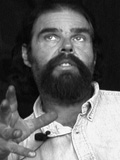 |
|
| |
 |
 |
|
| |
Aaron Owens
County: Alameda
Convicted of: 1st Degree Murder (2 counts)
Year of Conviction: 1973
Sentence: Life
Year Released: 1982
Years Served: Almost 10 years
Wrongful Conviction Factors: Mistaken eyewitness identification
Video
Wrongfully Convicted: Aaron Owens
One of Aaron Owens' best friends is John Taylor,
the man who sent him to prison for two life sentences for
a double murder he did not commit.
"Twelve people thought that I was the man
who committed the crime and they were wrong." Owens said.
John Taylor was the prosecutor who convinced the jury that
Owens was guilty. And Taylor is also the man who is responsible
for Aaron now being free. "If John were not the kind of man
he is, I never would have gotten out of prison. Nobody was
going to listen to me. Nobody did. It took a man with a conscience
like John to do what he did: see a mistake and rectify it."
Though Aaron's conviction was for a capital
offense, it came at a time when California had a moratorium
on the death penalty as a result of the U.S. Supreme Court
ruling in Furman v. Georgia. That stroke of luck meant he
was sentenced to life instead. "If not for the moratorium,
I would have been dead in '76 because that's when they affirmed
my conviction," Owens said.
Aaron's conviction was simply a case of mistaken
eyewitness identification. Owens said that the pivotal testimony
came from a victim who survived and testified "I would never
forget the eyes of the man who threatened to kill my little
boy." The jury asked to hear that testimony again, and convicted
Owens a short time later. But the witness simply made a mistake.
Indeed, when Aaron later saw a picture of the true killer,
he said "I thought it was a picture of me."
Thanks to John Taylor, Aaron received a full
pardon and was released in 1982 after 10 years in prison.
But that's all he got. He never received any compensation
at all. The conviction still appears on his record, which
has made life after prison even more difficult.
Aaron now works for John, doing investigation
and legal work. Both fan's of the Oakland A's, you will often
find them sitting at the ballpark together, friends with a
unique bond.
|
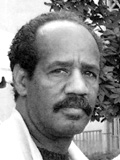 |
|
| |
 |
 |
|
| |
David Quindt
County: Sacramento
Convicted of: 1st Degree Murder
Year of Conviction: 1999
Sentence: Life without parole
Year Released: 2000
Years Served: 14 months
Wrongful Conviction Factors: Mistaken eyewitness identification
Video
Wrongfully Convicted: David Quindt
When the police called asking about a double
murder, David Quindt did what most innocent people do. "I
said sure, I'll talk to you, I have nothing to hide, I didn't
do this." He met with police, answering all of their questions
and even taking a lie detector test. But then he was convicted
based on the identification of one eyewitness. "I was dumbfounded,"
David said, "I couldn't believe what was going on at all."
The shock took its toll on the 24 year old
man. "I had a nervous breakdown when I was there [in jail],"
he said. David attempted suicide twice, first jumping out
of a fourth story window, then cutting his stomach open.
But then he began to focus, realizing he had
to help himself or he would never go home. "I always said
I will go home." He began researching his case and the law.
He drew strength from an unlikely source, a guard. "He always
told me don't give up, keep going," David said. "If it wasn't
for that one cop � I don't think I would have made it."
Then, out of no where, the Deputy District
Attorney who had him convicted, Mark Curry, came to visit
in prison. He said, "David, I'm sorry. You get to go home
on Monday." New evidence, revealed after David's trial, led
the district attorney to the true killer. David burst into
tears.
He spent another difficult weekend in jail
and then had to suffer the indignity of being released from
the back gate, rather than the front door. But when he walked
to the front of the jail, David saw his grandmother waiting
for him and again started to cry.
Two years in custody for a crime he did not
commit changed David's whole life. "People don't know how
precious life is," he said. "When I got out, I was like a
reborn child." But when he got out, he had nothing and found
himself and his wife homeless for a time. "We're still struggling,"
David said, "but I'll make it. I made it through this and
nothing could be worse."
|
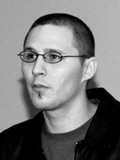 |
|
| |
 |
 |
|
| |
Ron Reno
County: Fresno
Convicted of: Felon in possession of a firearm
Year of Conviction: 1997
Sentence: 25 years to life
Year Released: 2002
Years Served: 5.5 years
Wrongful Conviction Factors: Poor defense
On April 16, 1996, Ron Reno's friend Preston Marsh was in trouble with the law. Suspected of using someone else's credit card to buy merchandise, Marsh took off, leaving behind a gun in a boot box in Reno's truck. Police found the gun and charged Reno with being a felon in possession of a gun, as well as the crimes theft that they suspected Marsh of.
Because Reno had prior convictions, he was charged as a three-strikes defendant and faced a life sentence. His trial attorney did no investigation to find Marsh or to follow up with other witnesses. Rather he untruthfully told Reno that the witnesses would not help him and that if he did not take a deal, he would spend the rest of his life in prison. Reno accepted the deal and pled guilty. On subsequent appeals, the courts found that trial counsel had been ineffective.
Several years into his sentence, Reno encountered Marsh in prison. Reno told Marsh that he had been convicted of possession of a firearm because they had found the gun in the boot box. Marsh was surprised, said he had no idea and acknowledged that he owned the gun and had hidden it in the boot box in the truck. He provided a declaration and met with the District Attorney, reiterating his responsibility for the gun.
With Marsh's declaration, as well as the declarations of all the other witnesses, the Innocence Project filed a petition for writ of habeas corpus arguing that this new evidence demonstrates that Reno is actually innocent of the crime to which he pled guilty and for which he received a life sentence. The prosecution opposed the writ. Then, the day before the hearing was to begin, the DA offered Reno a deal and he was released with time served. |
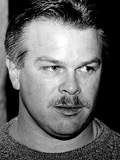 |
|
| |
 |
 |
|
| |
Peter J. Rose
County: San Joaquin
Convicted of: Kidnap (child under 14), Forcible Rape, and Forcible Oral Copulation
Year of Conviction: 1995
Sentence: 27 years
Year Released: 2004
Years Served: 9 years, 10 months
Wrongful Conviction Factors: Police misconduct; mistaken eyewitness; junk science
Video Wrongfully Convicted: Pete Rose
On the morning of November 29, 1994, in Lodi, California, a 13-year old girl en route to school was grabbed and dragged into an alley by a man who punched her in the face, assaulted and raped her.
The victim told police she did not know the identity of her attacker. Peter Rose was acquainted with the victim and her family. The girl's aunt repeatedly suggested Rose's name to the victim and to the police. However, the girl did not select his photo from a spread and continued to maintain she did not know the attacker. Three weeks after the rape, following a coercive three hour interrogation, the girl raised Rose's name tentatively. At trial, she identified Rose with certainty. A state criminalist testified that Rose was within 30% of the population who could have deposited the semen found on the victim's underwear. The prosecutor relied on this evidence in closing argument to corroborate the eyewitness testimony. The jury convicted Rose, and the court sentenced him to 27 years in prison.
The Northern California Innocence Project
at Golden Gate University in San Francisco began work on Rose's
case in 2003. Initially, county officials maintained that
all the evidence in the case had been destroyed. Students
found one piece of evidence still in existence: a cutting
from the victim's underwear. DNA testing excluded Rose as
the perpetrator and resulted in his release from prison in
2004. In 2005, the Court declared him factually innocent.
The Lodi police investigated themselves and found no wrongdoing.
The real perpetrator has not been identified.
|
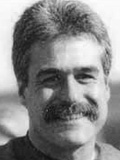 |
|
| |
 |
 |
|
| |
Chol Soo Lee
County: San Francisco
Convicted of: 1st Degree Murder
Year of Conviction: 1973
Sentence: Life (then sentenced to death)
Year Released: 1983
Years Served: 10 years
Wrongful Conviction Factors: Misconduct by police and prosecutors, mistaken eyewitness identification
Video
Wrongfully Convicted: Chol Soo Lee
Chol Soo Lee, came to the United States from
Korea in 1964, settling in San Francisco's Chinatown. In the
early '70s, a gang war was ragging in Chinatown and the police
were under intense pressure to make arrests. "They needed
a scapegoat and the scapegoat turned out to be me," Chol said.
In 1974, at the age of 20, he was wrongfully convicted of
murder and sent to prison in Tracy.
Chol describes Tracy as "one of the most violent
prisons in California." Racial gang wars ragged. With very
few other Asian prisoners, Chol found himself in prison yard
with African-Americans on one side, whites on the other "and
me standing alone in the middle." Warned by a guard that he
was the target of a hit, Chol stabbed a man in self-defense,
killing him.
A small article ran in the paper about, catching
the eye of a Korean reporter, Kyung Wong Lee ("K.W." Lee).
Lee's nephew has the same name as Chol. K. W. Lee visited
Chol and began investigating the original conviction, leading
to a series of articles, leading to the creation of the Chol
Sol Lee Defense Committee. "There was a flood of support coming
to me," Chol said, "and that was support of the purest form
of humanity, unselfish, giving to a man going on trial for
his life."
Because even while K.W. Lee was uncovering
the falsity of Chol's original conviction, the state was seeking
the death penalty in the prison yard incident, based on the
prior murder conviction. Indeed, in 1979, Chol was sent to
death row, even though the courts had already vacated the
prior conviction based on the work of K.W. Lee, the defense
community, and dedicated lawyers.
The community movement went from local, to
national, to international, as people from across the U.S.
to Korea rallied in support of Chol. After eight years on
death row, he was finally freed in 1983 after his conviction
was overturned due to false testimony by prison informants.
"The most important thing that I learned
from my struggle to get out of prison," Chol said, "is that
it was not just a struggle for freedom but for humanity, a
struggle that prevailed against all odds."
|
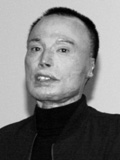 |
|
| |
 |
 |
|
| |
John Stoll
County: Kern
Convicted of: Child Molestation
Year of Conviction: 1985
Sentence: 40 years
Year Released: 2004
Years Served: 20 years
Wrongful Conviction Factors: Police/prosecutorial misconduct; false testimony
In the 1980s, Kern County and other places around the world got caught up in a wave of child molestation hysteria that led to the convictions of many innocent men and women. Authorities suspected that as many as 248 Kern County residents were committing group acts of Satanism, incest, infanticide, and mass molestation of children. Law enforcement personnel, social services workers, and prosecutors used improper interviewing techniques to push children into making false reports of sexual abuse. After a broad investigation, the California Attorney General issued a lengthy report criticizing Kern County's improper methods in investigating cases of suspected child sexual abuse during this period. Since then, federal and state courts have reversed the convictions of 34 defendants in Kern County molest cases on evidence that the convictions were the result of unreliable evidence.
John Stoll was one of the victims of this hysteria. He had been involved in an ugly custody dispute and divorce when police and social workers turned a report by his son of child sex play into a full-blown child molestation ring, with Stoll as the leader. At one point Stoll faced thirty-one counts of child molestation, later reduced to eighteen, involving six children, including his own son, and three co-defendants. No physical evidence corroborated the inconsistent stories of the children. Though authorities alleged Stoll and his co-defendants routinely sodomized the children, no one took the children to a doctor for examination or treatment. Nonetheless, Stoll was convicted of 17 counts of molestation.
In 2001 the Northern California Innocence
Project learned of Stoll's case and began the fight to free
him. In 2004, after a habeas corpus evidentiary hearing at
which four former child witnesses testified to being forced
to testify falsely against Stoll and his co-defendants and
one recalled no molestation, a judge overturned Stoll's convictions
and he was finally freed.
|
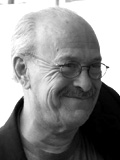 |
|
| |
 |
 |
|
| |
Rick Walker
County: Santa Clara
Convicted of: 1st Degree Murder
Year of Conviction: 1991
Sentence: 25 to life
Year Released: 2003
Years Served: 12 years
Wrongful Conviction Factor: False testimony; poor defense
Video
Wrongfully Convicted: Rick Walker
As a young man, Quedellis Ricardo "Rick" Walker
was working as a car mechanic and struggling with a drug addiction.
He and his family dreamed of putting townhouses on their land
and, in Rick's words, "living happily ever after." Those dreams
were destroyed in 1991 when Rick was falsely convicted of
murder and sentenced to life in prison.
Rick's former-girlfriend, Lisa Hopewell, had
been murder. "That was all they needed," Rick said, "I was
a Black man from East Palo Alto, at the time when East Palo
Alto was the murder capital of the world, and they did not
need much else to convince the jurors that I was a monster."
"In the beginning, prison was my own personal
hell," said Rick. "I had gotten bitter, angry. . . . I felt
that the system had completely let me down and my family."
Eventually, Rick realized that "anger will
tear you apart . . . and leave you hollow spiritually." Rick
looked at himself and said, "You're a survivor and you need
to get up and fight. So I got up and fought, and began to
change."
Rick cleaned up his life, giving up coffee,
cigarettes, drugs, and profanity. He joined the Christian
population and taught Bible study on Saturday nights where
he "began to help other guys with the healing process."
Then one day they told him to call his attorney
but he couldn't get through. "When all else fails," Rick said,
"Call momma. So I called my mother and she said 'you're coming
home.' It was so emotional. It's like you're carrying the
weight of the world on your shoulders and its suddenly lifted.
"
Alison Tucher, a lawyer and family friend,
had volunteered to take on Rick's case. Her dogged investigation
resulted in DNA and other new evidence proving Rick was innocent
and identifying the real killers. In 2003, after more than
12 years in prison, Rick was released. "They just turned my
loose back into society with nothing," said Rick.
Rick once again works as a mechanic and spends
his time with his family, the two young nieces he is raising
and his mother and adult son, who stood by him through everything.
|
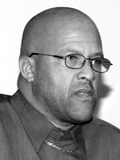 |
|
| |
 |
|
|
| |
|
|
| |
|
|
|
| |
|
|
|
|
|
|





